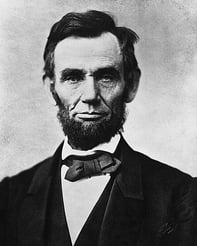Published on
The Course of a Lifetime: The Future of Higher Education from the Perspective of Lifelong Learning

What will higher education look like in another 50 years?
Given the array of factors at play — from technology to economics to rapidly changing global demographics — it may seem foolish to even wager a guess. Nonetheless, when I peer out from my native environment of adult lifelong learning, there are two forces in particular that seem certain to change what higher education will look like in the decades to come.
The first is rapidly eroding confidence in the traditional degree. While it is still true that those with college and university degrees tend to fare significantly better in life than those without, this fact is arguably as much a matter of convention as it is of the actual value of a degree. Concerns about the costs, the burden of student debt, and the “shelf life” of degrees are driving students, parents and employers to consider alternatives. And the alternatives — particularly given what technology has made possible — are better than they have ever been before. However they ultimately pan out, trends such as Massive Open Online Courses (MOOCs), badges, stackable credentials and the general growth in certificate programs point the way to a future in which degrees may no longer be the core focus of higher education.
The second is the dramatic degree to which the nature of work has changed over the past century, and even over the past couple of decades. We now live longer, healthier lives than ever before and, as a result, we work for many more years, whether out of necessity or choice. Moreover, at least in the developed world, we no longer live in an industrial economy or even in a knowledge economy; we live in a learning economy, an environment in which we must continually learn and re-learn in order to thrive. Most of us will switch not only jobs but also careers multiple times throughout our lives. And an increasing number of us — 42 million in the U.S. economy — now work as freelancers, meaning we are on our own for ongoing training and education. The need for a dynamic network to support lifelong learning has never been greater.
While there are many other forces impacting higher education at the moment, these two trends alone point to three fundamental shifts that must occur in higher education management over the coming decades.
1. Capitalizing on the Alumni Market
The first is that lifelong and continuing education opportunities for alumni will assume a level of importance equal to or greater than the traditional two- and four-year curricula. While alumni education programs have historically focused on areas like enrichment and travel programs — in many cases, targeted at older adults — the potential to serve as a more continuous and significant life and career resource is tremendous.
Technology now makes it possible to reach alumni anytime and anywhere, and most institutions already have a sizeable alumni base they could be serving more effectively. Capitalizing on what I call “the other fifty years” — that period of life that occurs after most of us have completed traditional formal education — will be a key to institutions remaining relevant and thriving in the learning economy.
2. Moving Beyond the Degree
The second major shift will be in what “counts” for higher education. While degrees are unlikely to disappear, we have clearly reached a point where the traditional degree experience is not in alignment with the needs of most students or employers. Institutions will find themselves under increasing pressure to offer a portfolio of options that vary in time required, cost and value.
In keeping with the alumni focus discussed above, institutions will find themselves engaging with students in shorter chunks over much longer stretches of time – an initial certificate or credentialing program, for example, followed by a regularly scheduled refresher and advancement classes over the course of several years.
3. Embracing an Entrepreneurial Mindset
Finally, the first two points demand a third: that institutions become dramatically more entrepreneurial in how they approach their markets. Like it or not, higher education does, in fact, operate within a market economy and competition — whether directly for a student’s dollars or indirectly for a student’s time — is increasing fast.
Successful institutions will experiment frequently and purposefully, embrace effective internet marketing practices and continually refine their value proposition. Doing this, of course, will require leaders who have been educated in (and, preferably, who have experience in) entrepreneurial practices.
Conclusion
The sum of these three shifts is an overall movement to serving learners not over the course of two to four years, but over the course of a lifetime. My hope is that it will take nowhere near 50 years for such a movement to occur. There is a clear and immediate need for it, and institutions that embrace the three shifts described here will perform an invaluable service to both the present and the future.



